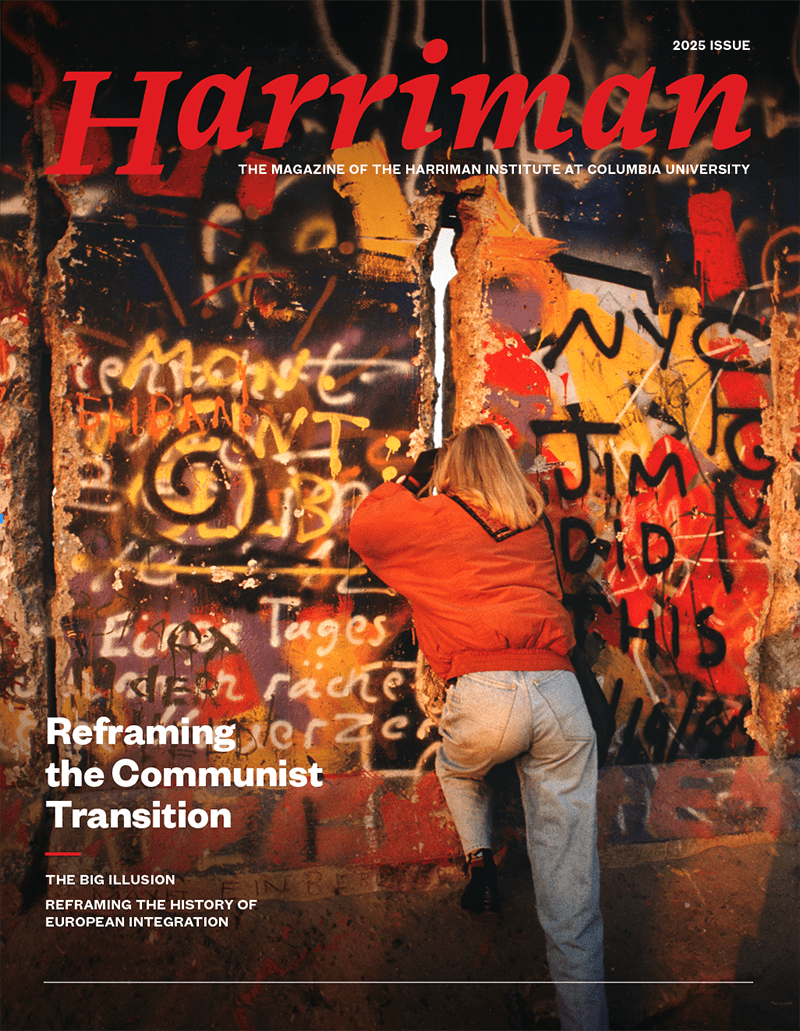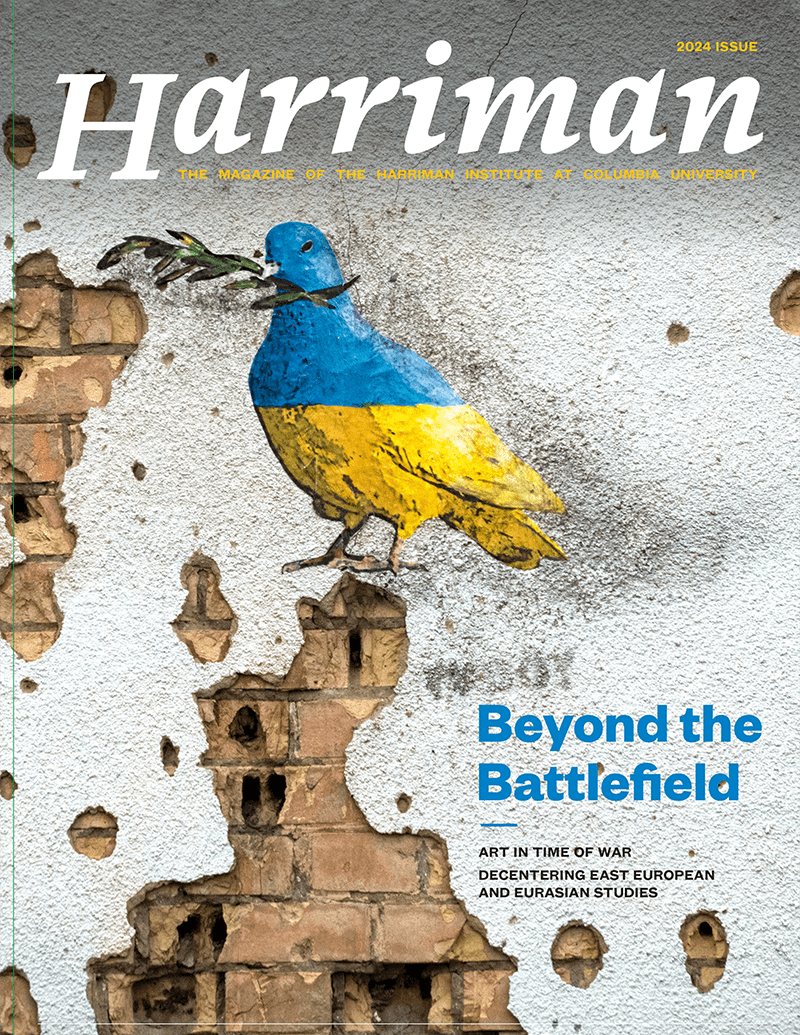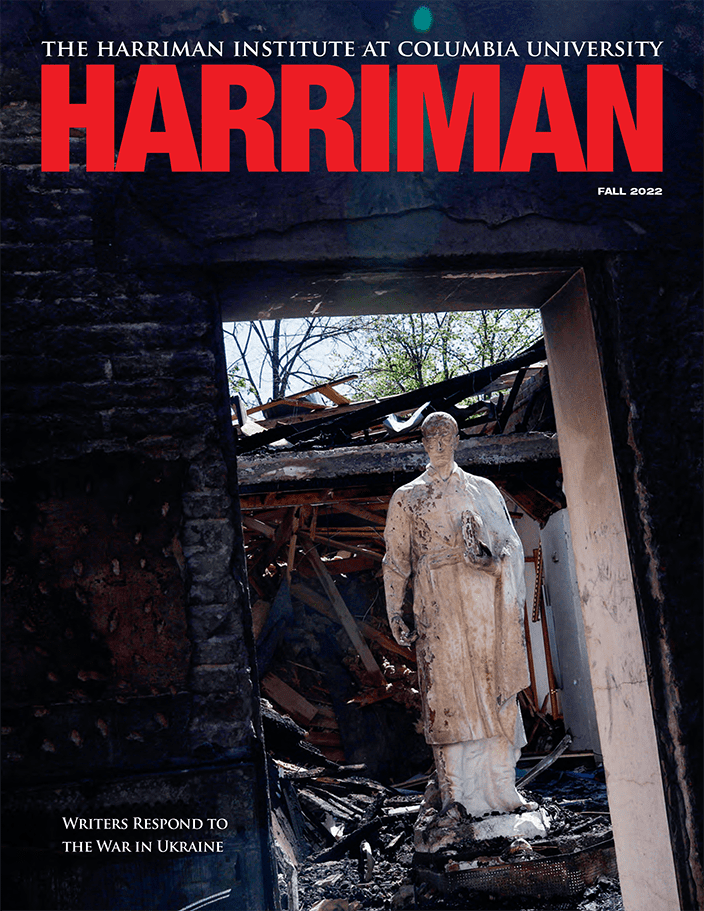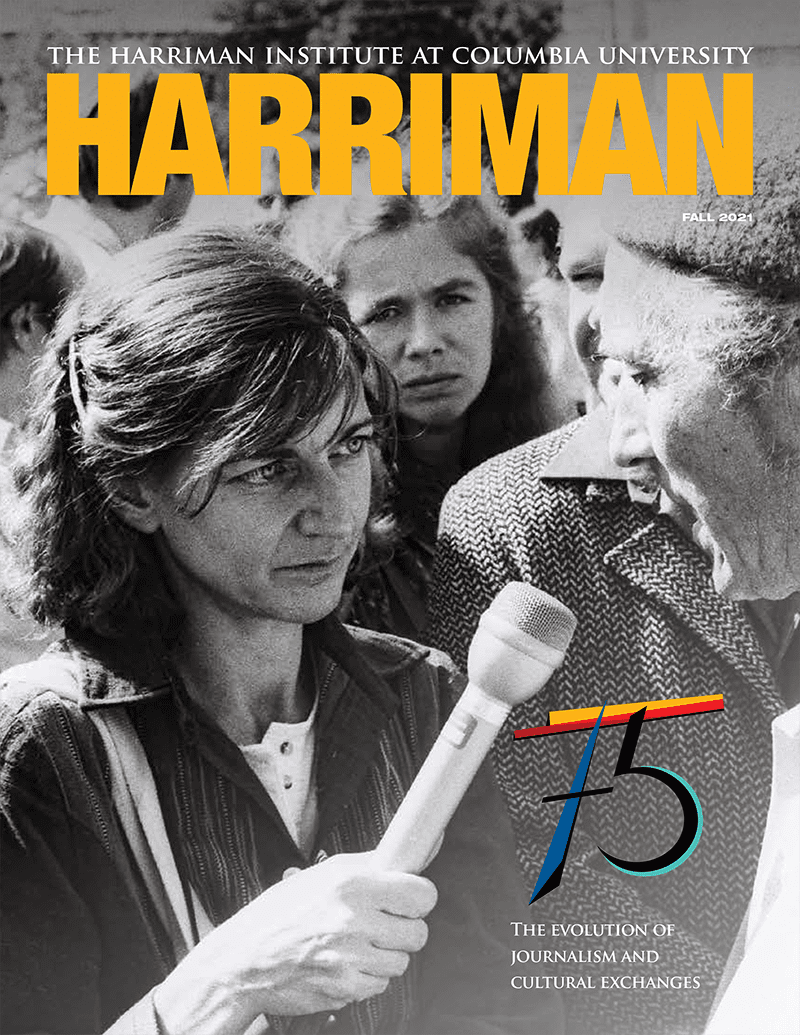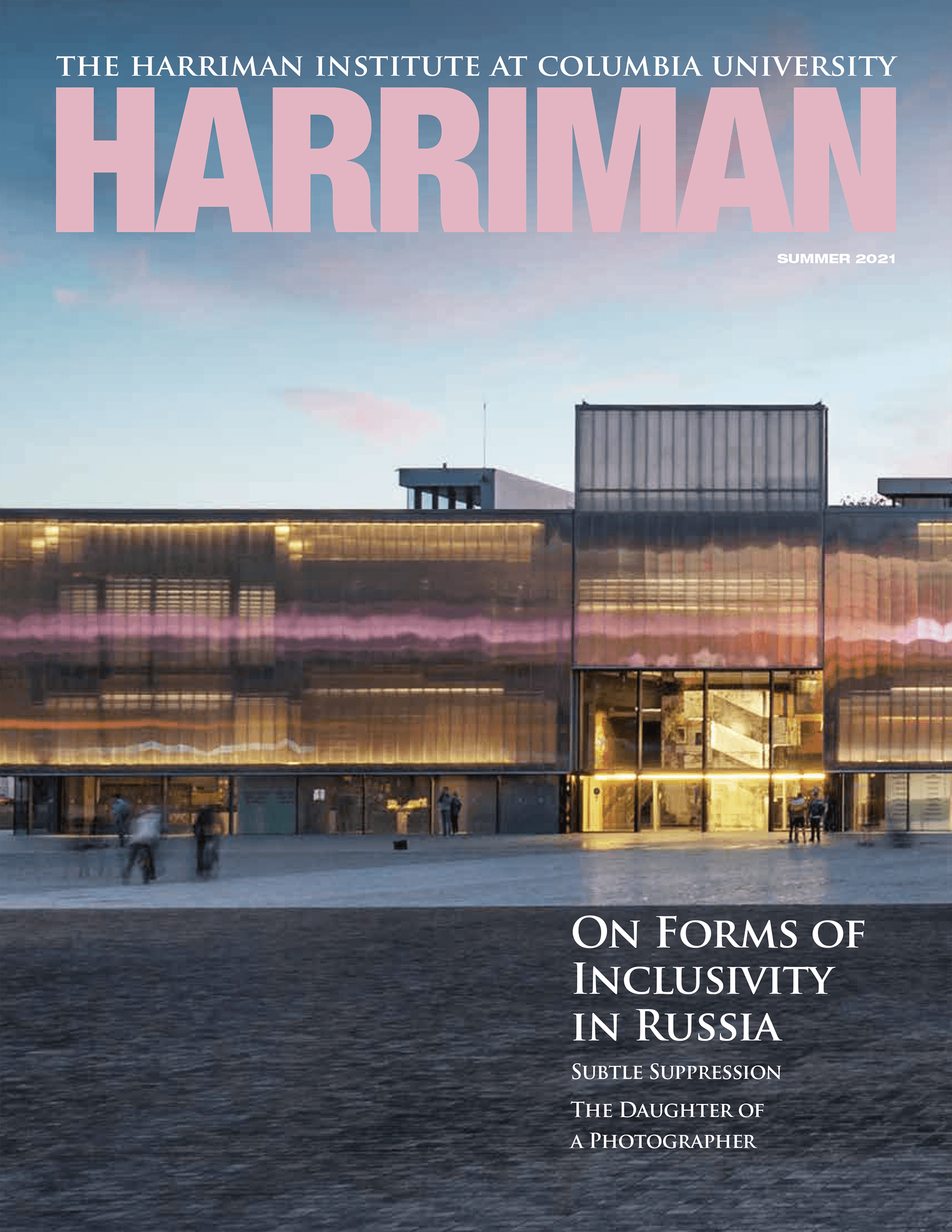How Jeffrey Trimble Helped Create a Victim of Gorbachev’s “Openness”
In 1987 I was in my second year as Moscow bureau chief of U.S. News & World Report, dashing from story to story along with the rest of the international press corps as fascination with Soviet leader Mikhail Gorbachev’s still-emerging, ambitious perestroika (restructuring) reforms swept the globe.
Glasnost—most often translated as “openness” or “transparency”—was perhaps the most impactful reform of that era. It was certainly the most exciting one. No topic was off limits for open discussion in the media, Gorbachev insisted back then. Soviet newspapers, radio, and TV brimmed with reports of day-to-day life as it actually was (pretty dismal) and uncensored coverage of government policies. Many taboo issues were finally opened for discussion: Stalin’s era of terror, the bureaucracy and corruption in the Soviet state machine, even the seamier sides of Soviet life such as crime and prostitution. Academics and scientists, dissidents, and average people were for the first time allowed to debate the Communist hierarchy. Books, films, and theater performances banned by previous regimes were finally published and shown.
“Without glasnost there is no and cannot be any democratization, or political creativity of the masses, or their involvement in ruling,” Gorbachev said in 1986, adding later that year: “People need the truth, the whole picture . . . Now, as never before, we need more light, so that both the party and people would be able to know everything, so that we no longer have so-called ‘dark corners,’ where mold could spring again.”
As the glasnost wave intensified, I was given a unique opportunity to put Gorbachev’s pledge to the test—and in doing so, I helped to ignite a scandal that vividly demonstrated what glasnost was, and what it was not. Glasnost was often portrayed as an unprecedented, exciting, dynamic period of flourishing public debate and media pluralism in the USSR—but, as I discovered in the heady early period of reform, that definition applied only so long as the narratives supported Gorbachev and his policies.
And looking back, I believe that the broader failure to recognize the fundamental difference between glasnost and true freedom of the press contributed to the short-lived era of press freedom before and after the Soviet collapse and to the long era of Putin repression that followed. Had Western leaders better understood, perhaps they would have been more restrained in pushing Russia to adopt shock therapy and other hurry-up approaches to revamping society to be more like the West. Too many well-intentioned international initiatives failed when they hit Russian realities and actually contributed to what became resentment and bitterness toward the West.
The experiment was to test the Soviet leadership’s stated commitment to glasnost. Would Ogonyok in fact publish my impressions … warts and all?
“It’s not easy for a foreign correspondent to cover the Soviet Union outside Moscow,” I observed in U.S. News & World Report (October 19, 1987), in a sweeping cover package headlined “A New Revolution: Can Gorbachev Save a Failing System?”
“Trips are hampered by red tape, and huge areas are off-limits to foreigners,” I continued. “The result: Few firsthand reports on how Mikhail Gorbachev’s revolution is playing in the hinterlands. But recently, in an unprecedented collaborative reporting effort, I visited seven Soviet cities with Dmitri Biryukov, foreign editor of the Soviet magazine Ogonyok (“Little Flame”). We covered more than 9,100 miles — a distance roughly equal to 3.5 trips across the continental United States.”
Earlier that year, I had worked out a deal with Biryukov and his editors at Ogonyok that I saw as both an experiment and an opportunity: Dmitri and I would travel around the USSR and each of us would write his own article about the experience, for publication in Ogonyok and U.S. News. Then, the plan envisioned, Dmitri and I would take a similar, cross-country reporting trip around the United States, again with our individual accounts published in both magazines.
The experiment was to test the Soviet leadership’s stated commitment to glasnost. Would Ogonyok in fact publish my impressions of Gorbachev’s USSR and perestroika, warts and all? The opportunity was that the imprimatur of Ogonyok, one of the USSR’s most progressive, pro-reform media outlets, would smooth travel connections and open doors across the country that had long been closed, and in many cases had never been open at all, to foreign journalists. Ogonyok, a once-staid weekly news and features magazine, had become a glasnost leader. Copies flew off newsstands, with seemingly no-holds-barred revelations that tested the boundaries of openness and fascinated and titillated millions of readers.
The magazine was under the patronage of Alexander Yakovlev, head of the Communist Party’s Propaganda Department, a member of the ruling Politburo, and one of Gorbachev’s closest advisors. Yakovlev, a former ambassador to Canada, was a leading reformer and considered to be glasnost’s patron saint.
Biryukov, a 32-year-old reporter two years my senior, well-educated, urbane and with good command of English, was of the pro-Gorbachev generation of Soviet “golden youth.” His family connections high in the elite smoothed his journalistic rise and provided a “krysha”—“roof,” literally—that afforded a measure of protection against any official pressure on his bold reporting. “We are working on enthusiasm and adrenaline,” Biryukov told Time magazine earlier in 1987, describing the breakneck pace and far-reaching reporting conducted by glasnost-enabled Soviet journalists.
Dmitri and I spent a whirlwind three weeks traveling from the Baltics to Ukraine and across the plains of Central Asia and Siberia. Among our travel stops: a co-op video café in Odesa that screened “Tom and Jerry” cartoons in the morning and Western, adult fare in the evening—employees made twice the average Soviet wage and the directors dreamed of turning it into a Ukraine-wide chain; a collective farm in Moldova whose iron-willed elderly female director was exploiting loosened state regulations to establish more efficient work teams that produced higher crop yields, and earnings; a Buddhist temple on a windswept plain outside Ulan-Ude (Siberia), where a newly-minted priest cautiously described increasing official tolerance of religion; and a sold-out new play in Leningrad about the lives of sex workers in the USSR where an on-stage prostitute dropped her skirt, lowering herself onto a client. We had frank conversations at every stop, with ample complaints accompanying the success stories.
I wrote my article in standard, third-person journalism style, letting the scenes and characters we encountered tell the story of how perestroika was playing away from the Soviet capital. There was no effort by Ogonyok to tone down or cut unfavorable observations. Dmitri wrote his article in first person, and in his narrative, he often observed my reactions to our experiences. He mused, for instance, about how I might react to a just-completed public opinion poll we were told about in Novosibirsk that indicated 30 percent of the city’s population favored perestroika, 50 percent were neutral, and 20 percent were against it.
Glasnost at its best, right? Except . . . no.
Against this rosy backdrop, Dmitri’s casual mention of the poll describing the lukewarm Siberian reception of perestroika landed with a crash.
Our stories (headlined in U.S. News “From Riga to Siberia: The reforms outside Moscow” and in Ogonyok “From the Baltics to Baikal” (От Балтики до Байкала) appeared in October in U.S. News and in early November in Ogonyok, on the eve of the seventieth anniversary of the Bolshevik Revolution. At that time daily broadcasts and speeches by Gorbachev and other officials extolled the successes of perestroika and claimed total public support for the reforms. Against this rosy backdrop, Dmitri’s casual mention of the poll describing the lukewarm Siberian reception of perestroika landed with a crash.
Vitaly Korotich, the crusading editor of Ogonyok, described in his memoirs what happened right after the article’s publication: a furious Yakovlev called him demanding Biryukov’s immediate removal from the magazine’s editorial board and a reprimand from the magazine’s Communist Party organization. Yakovlev later told Korotich that, after reading the article, Gorbachev himself had called him at dawn, shouting about an “anti-party conspiracy” in Siberia. A commission from the party’s Central Committee was dispatched to Novosibirsk “to clarify the question of the harmful deviation emerging there.”
Biryukov was publicly humiliated and ousted from his position. Ogonyok published a retraction stating that Biryukov had made up the data—no such survey had been conducted in Novosibirsk. “Distortion of factual data is a crude violation of the most important tradition of the Soviet press – to state truthful information,” read the retraction. “Only undeviating observance of this principle allows the press to increase its role in the work of perestroika.”
Korotich went on to describe how they hid “the unfortunate Biryukov in the depths of the information department,” for the duration of the following year.
In fact, the “distortion of factual data” was by cowed party officials and Ogonyok editors, not by Biryukov. The survey had been conducted and the results—lukewarm support for perestroika—were just as Dmitri reported. My own notes confirm this (though the detail didn’t make it into my story for editorial reasons), and I learned only recently from a declassified State Department cable that a senior Soviet agriculture official had quoted the same survey in a meeting with U.S. diplomats in 1989.
After his ignoble dismissal, Dmitri and I lost touch. His successor, Artyom Borovik, discouraged me from contacting Dmitri. It was better, Borovik insisted, for Dmitri to lie low without foreign contact—particularly with the co-author of his misfortune—until the storm blew over. Dmitri made no effort to reach me, then or later, and I followed his lead. I assumed — rightly, I hope — that Dmitri’s krysha of highly placed relatives and friends would shield him from real, long-term harm. I received no inquiries or complaints from Soviet officials about the incident.
Borovik, another member of the “golden youth” who had published remarkably frank reporting from Afghanistan about the Soviet military and political debacle there, eventually traveled to the United States with the assistance of U.S. News and reported for Ogonyok in a much scaled-down version of what Dmitri and I had planned to do. Given lingering caution at Ogonyok, I did not travel with Borovik, so only his reporting appeared in the Soviet weekly.
The policy ultimately stimulated dissatisfaction not only with the Soviet leader and his reforms, but with the entire construct of the Soviet system—thereby hastening the historic collapse of Communism and the demise of the USSR in 1991.
But even today, glasnost lives on, through pluralistic political, social, and media environments in many of the former socialist/Communist countries and institutions.
And yet ghosts of glasnost lingered, first into the “wild west” 1990s when Russia’s media landscape opened up and there was a burst of genuine pluralism that foundered amid economic hardships and dominance by oligarchs. After Vladimir Putin came to power at the very end of 1999 efforts began to get the media, and media owners, back under control. Borovik, whose edgy investigative reporting after leaving Ogonyok often took aim at the Kremlin, died in a suspicious plane crash in 2000. But even today, glasnost lives on, through pluralistic political, social, and media environments in many of the former socialist/Communist countries and institutions such as independent Russian NGOs and media outlets that operate in exile.
In his account of our trip around the USSR, Dmitri wrote that he would like to see stereotypes dissolve, and the media “not to raise walls through mutual reproach and accusations . . . We must find new points of contact. They are needed for trust, cooperation and, most important, mutual survival.”
During a historic moment of excitement, promise, and optimism about the future of the Soviet Union, Dmitri dreamed big. But that moment soon passed, as Gorbachev’s reforms stalled, and the USSR began to rip at the seams.◆
Jeffrey Trimble was Moscow bureau chief of U.S. News & World Report magazine from 1986 to 1991. He is an affiliated lecturer at Ohio State University and chairs the board of directors at Eurasianet, an independent news organization based at the Harriman Institute. His Substack blog is “Ghosts of Glasnost.” The author drew important details for this article from “The Birth of Russian Media” (“Рождение российских СМИ”), compiled by researcher Nataliya Rostova. And he thanks Allan Mustard, retired Foreign Agriculture Service officer, for sharing the declassified cable.
Featured photo: Illustration by Two by Sixteen using the following images:
- Soviet leader Mikhail Gorbachev (Photo by Dyson/Mirrorpix/Getty Images)
- A Soviet-era broadcasting tower in Moscow (istock.com/Mordolff)
- Film strip (istock.com/Pgiam)
- Old television (istock.com/FotografiaBasica)
- Dot Pattern (istock.com/cundra)
- State Kremlin Palace (Jaunt and Joy on Unsplash)


